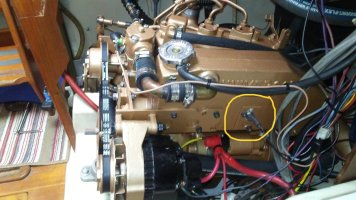20064-LF Save Your Engine Kit - LOW FLOW, 12 volt [] - $119.95 : AQUALARM, Warning Systems For Land And Sea
Save-Your-Engine Kit Works fo Save-Your-Engine Kit, LOW FLOW, 1/2" or 3/4" Hose, 12 volt Works for Raw Water Hose sizes 1/2" and 3/4" . Designed for smaller engines with lower flow rates. Monitors Raw Water Flow and sounds audible alarm and lights red light warning panel if cooling water flow is
aqualarm.net
I just ran across a reccomendation for this product on another sailing forum, from a contributor that I have found to be credible. Have any of you used it? I have not (yet) had a sudden clog in the intake, but whenever we are motoring thru/around patches of seaweed do worry about it.
Thanks!

